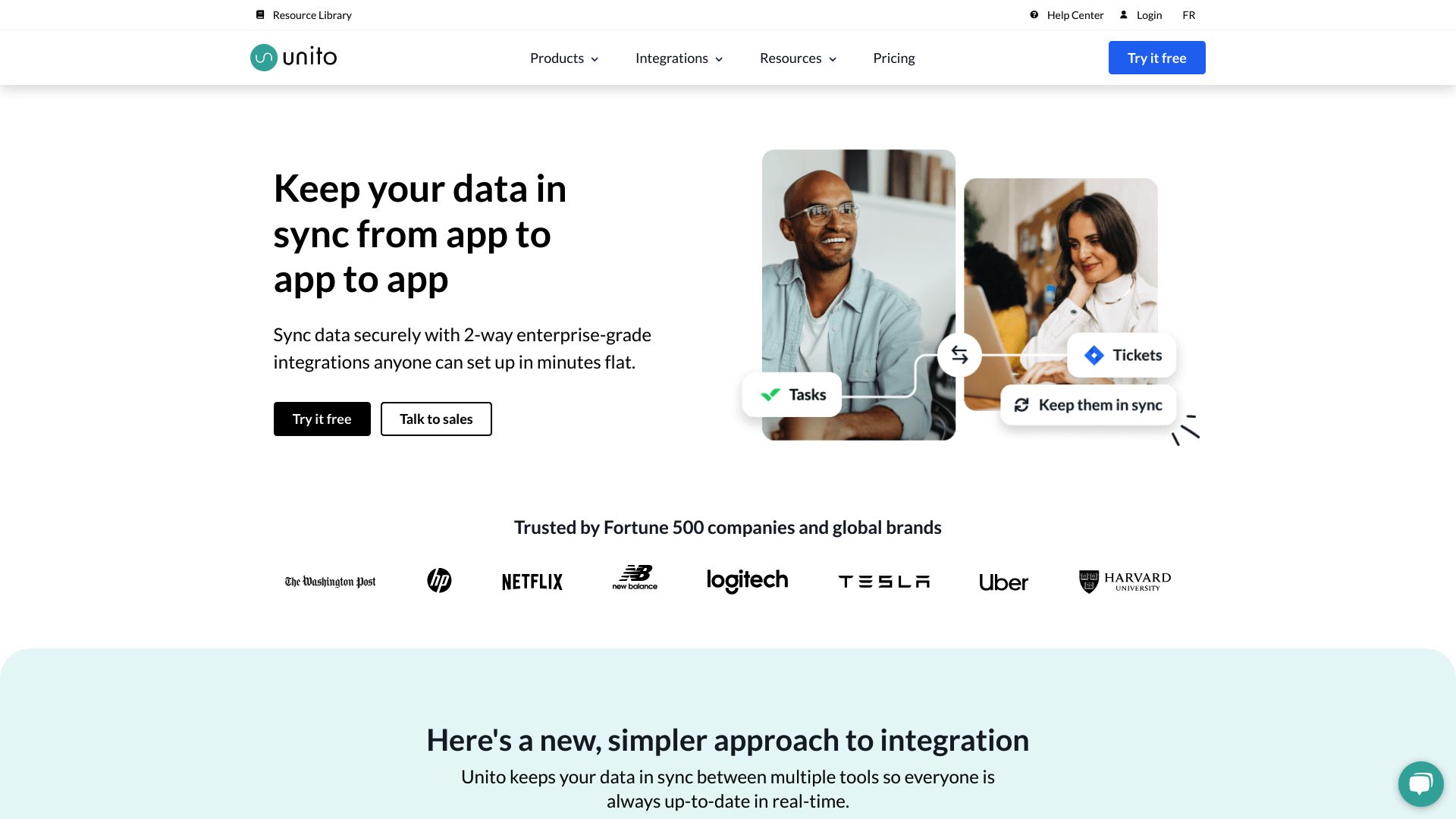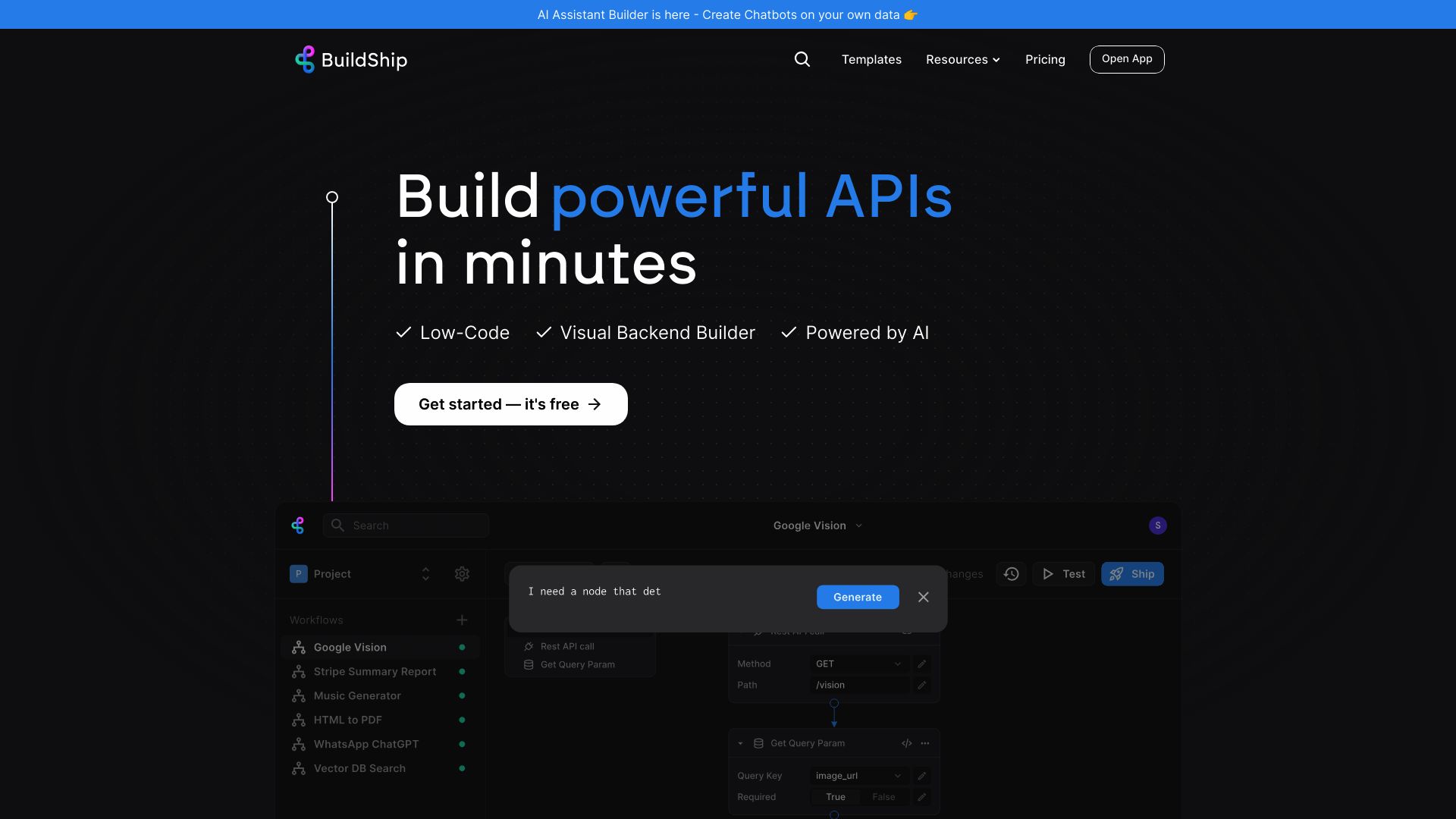Unito vs. BuildShip: AI Workflow Automation Compared
AI platforms are transforming how businesses operate, but choosing the right solution can be challenging. This review compares Unito vs. BuildShip, and SmythOS, three leading platforms that offer unique approaches to workflow automation and AI integration. Unito excels in real-time data synchronization across tools, while BuildShip focuses on creating custom backend workflows with AI-assisted features.
SmythOS, however, emerges as a comprehensive solution, combining powerful AI capabilities with extensive integrations and user-friendly design. We’ll explore each platform’s strengths, limitations, and ideal use cases to help you make an informed decision for your organization’s needs.
Unito Overview
Unito provides a powerful integration platform designed to streamline workflows across diverse tools and teams. The Unito Sync Platform enables seamless data synchronization between popular project management, collaboration, and development tools. This robust solution tackles the challenge of fragmented workflows by creating a unified ecosystem where information flows freely between applications.
At its core, Unito offers real-time two-way synchronization, ensuring that updates made in one tool instantly reflect across all connected platforms. This feature proves invaluable for teams using multiple tools, as it eliminates data silos and reduces the need for manual updates. Unito’s platform supports a wide array of integrations, including Asana, Jira, Trello, and GitHub, making it adaptable to various team structures and workflows.
Unito offers real-time two-way synchronization, ensuring that updates made in one tool instantly reflect across all connected platforms.


Unito excels in its flexibility and customization options. The platform’s deep field configuration allows users to tailor syncs to their specific needs, mapping fields between tools with precision. This level of customization ensures that teams can maintain their preferred workflows while benefiting from cross-tool integration. Additionally, Unito’s historical sync feature brings past data into the fold, providing comprehensive project insights and seamless transitions when adopting the platform.
The platform’s deep field configuration allows users to tailor syncs to their specific needs, mapping fields between tools with precision.
While Unito offers significant advantages in workflow integration, it’s important to note that it doesn’t provide AI agent capabilities or autonomous decision-making features. The platform focuses on data synchronization rather than intelligent task automation or AI-driven insights. However, Unito’s strength lies in its ability to create a cohesive work environment across disparate tools, which can indirectly enhance team productivity and decision-making processes.
Unito’s enterprise-grade security measures, including SOC II Type 2 certification, make it a reliable choice for organizations handling sensitive data. The platform’s self-serve setup empowers users to configure and initiate integrations independently, reducing reliance on IT departments for routine integration tasks. This combination of security and user empowerment positions Unito as a versatile solution for businesses of various sizes seeking to optimize their digital workflows.
BuildShip Overview
BuildShip empowers users to create powerful backend workflows and APIs without extensive coding knowledge. The platform’s visual no-code interface allows developers and business users to construct, test, and deploy complex automations with ease.
At its core, BuildShip offers a drag-and-drop workflow builder populated with pre-built nodes for common tasks. Users can integrate various data sources, APIs, and AI models to create sophisticated workflows tailored to their specific needs. For those requiring custom logic, BuildShip supports JavaScript and TypeScript scripting within nodes.
BuildShip empowers users to create powerful backend workflows and APIs without extensive coding knowledge. The platform’s visual no-code interface allows developers and business users to construct, test, and deploy complex automations with ease.


BuildShip stands out with its AI-powered features. Users can generate custom nodes using natural language prompts, streamlining the development process. The platform also offers AI autofill for inputs, further enhancing productivity. These AI capabilities, combined with a library of templates, enable users to accelerate their workflow development significantly.
BuildShip stands out with its AI-powered features. Users can generate custom nodes using natural language prompts… These AI capabilities… enable users to accelerate their workflow development significantly.
Testing and deployment receive considerable attention in BuildShip. The platform provides robust testing features for individual nodes and entire workflows, allowing for iterative development and refinement. Once workflows are ready, they can be deployed as production-grade APIs and integrated into existing applications. BuildShip also supports scheduled workflows for automated execution.
Security measures include OAuth authentication and secure storage for API keys and secrets, addressing common concerns in workflow automation. While BuildShip excels in many areas, it’s worth noting that it doesn’t offer specific features like hosted AI agents or advanced AI capabilities such as memory and context retention. Its focus remains on empowering users to build efficient backend processes and APIs through a user-friendly, AI-enhanced interface.
Feature Comparison
Unito and BuildShip offer distinct approaches to workflow automation, with key differences in their core components and security features. Unito specializes in real-time data synchronization across multiple tools, while BuildShip focuses on creating custom backend workflows and APIs.
Unito’s strength lies in its deep integration capabilities, allowing seamless data flow between popular project management and collaboration tools. However, it lacks AI-powered features and autonomous agent capabilities. In contrast, BuildShip incorporates AI elements, such as node generation through natural language prompts, but doesn’t offer the extensive tool synchronization that Unito provides.
Security-wise, both platforms prioritize data protection, but their approaches differ. Unito boasts SOC II Type 2 certification, emphasizing enterprise-grade security measures. BuildShip, while offering OAuth authentication and secure storage for API keys, doesn’t explicitly mention advanced certifications. This gap in security features may be a consideration for organizations with stringent compliance requirements.
Feature Comparison Table
| Unito | BuildShip | SmythOS | |
|---|---|---|---|
| CORE FEATURES | |||
| Memory & Context | ✅ | ❌ | ✅ |
| Autonomous Agents | ❌ | ❌ | ✅ |
| Explainability & Transparency | ✅ | ❌ | ✅ |
| Multimodal | ❌ | ❌ | ✅ |
| Problem-Solving Capabilities | ✅ | ❌ | ✅ |
| Multi-Agent Collaboration | ✅ | ❌ | ✅ |
| Human-AI Interaction | ❌ | ❌ | ✅ |
| Audit Logs for Analytics | ✅ | ❌ | ✅ |
| Work as Team | ✅ | ❌ | ✅ |
| Agent Work Scheduler | ❌ | ✅ | ✅ |
| SECURITY | |||
| Constrained Alignment | ✅ | ❌ | ✅ |
| IP Control | ❌ | ✅ | ✅ |
| COMPONENTS | |||
| Foundation AIs | ❌ | ❌ | ✅ |
| Huggingface AIs | ❌ | ❌ | ✅ |
| Zapier APIs | ✅ | ❌ | ✅ |
| Classifiers | ❌ | ❌ | ✅ |
| Logic | ✅ | ✅ | |
| Data Lakes | ❌ | ❌ | ✅ |
| DEPLOYMENT OPTIONS (EMBODIMENTS) | |||
| Deploy as Webhook | ❌ | ✅ | ✅ |
| Staging Domains | ❌ | ❌ | ✅ |
| Production Domains | ✅ | ❌ | ✅ |
| Deploy as Site Chat | ❌ | ❌ | ✅ |
| Deploy as Scheduled Agent | ❌ | ✅ | ✅ |
| Deploy as GPT | ❌ | ❌ | ✅ |
| DATA LAKE SUPPORT | |||
| Hosted Vector Database | ❌ | ❌ | ✅ |
| Sitemap Crawler | ❌ | ❌ | ✅ |
| YouTube Transcript Crawler | ❌ | ❌ | ✅ |
| URL Crawler | ❌ | ❌ | ✅ |
| PDF Support | ❌ | ❌ | ✅ |
| Word File Support | ❌ | ❌ | ✅ |
| TXT File Support | ❌ | ❌ | ✅ |
Best Alternative to Unito and BuildShip
SmythOS stands out as the superior alternative to Unito and BuildShip for AI agent development and deployment. Our platform offers a comprehensive solution that combines the best of both worlds while surpassing them in key areas.
Unlike Unito’s limited focus on data synchronization or BuildShip’s emphasis on backend workflows, SmythOS provides a versatile environment for creating autonomous AI agents capable of solving complex problems. We enable users to build, test, and deploy intelligent agents across various use cases without restrictive limitations.
Our drag-and-drop visual builder surpasses both competitors in ease of use, allowing even non-technical users to create sophisticated AI workflows. SmythOS also offers unparalleled flexibility through integration with multiple AI models, APIs, and data sources — capabilities neither Unito nor BuildShip can match.
SmythOS provides a versatile environment for creating autonomous AI agents capable of solving complex problems… without restrictive limitations.
Crucially, SmythOS excels in areas where Unito and BuildShip fall short. We provide robust memory and context management, enabling truly intelligent agents that learn and adapt. Our platform also supports multi-agent collaboration and human-AI interaction, opening up possibilities beyond simple automation. With features like deployment as APIs, chatbots, or scheduled agents, SmythOS offers unmatched versatility in how AI solutions can be implemented.
For businesses seeking a future-proof AI platform, SmythOS is the clear choice. We combine ease of use with advanced capabilities, empowering users to harness AI’s full potential across unlimited use cases. Whether you’re a developer, business user, or enterprise, SmythOS provides the tools to turn your AI vision into reality — faster and more effectively than the alternatives.
SmythOS is the clear choice… empowering users to harness AI’s full potential across unlimited use cases.
Conclusion
Unito, BuildShip, and SmythOS each offer unique solutions for workflow automation and integration, catering to different aspects of business processes. Unito excels in real-time data synchronization across multiple tools, while BuildShip focuses on creating custom backend workflows and APIs with some AI-powered features. However, SmythOS stands out as the most comprehensive and versatile platform among the three.
SmythOS combines the strengths of both Unito and BuildShip while offering additional advanced capabilities. Its drag-and-drop interface, similar to BuildShip’s, allows for easy creation of complex AI workflows. Unlike Unito, which primarily focuses on data synchronization, SmythOS enables the development and deployment of autonomous AI agents that can handle a wide range of tasks, from data processing to decision-making.
The platform’s extensive integration ecosystem, supporting over 300,000 integrations, surpasses both Unito and BuildShip in terms of flexibility and connectivity. This vast network of integrations, combined with SmythOS’s support for multiple AI models and deployment options, makes it an ideal choice for businesses looking to implement AI solutions across various channels and platforms.
For those interested in exploring the capabilities of SmythOS, we recommend starting with our free agent templates. These templates cover a wide range of business functions and can help you quickly understand and implement AI-powered solutions. To experience the full potential of SmythOS, create a free account and start building your own AI agents today. With our 30-day money-back guarantee, you can explore SmythOS risk-free and discover how it can revolutionize your workflow automation and AI integration processes.
Last updated:
Disclaimer: The information presented in this article is for general informational purposes only and is provided as is. While we strive to keep the content up-to-date and accurate, we make no representations or warranties of any kind, express or implied, about the completeness, accuracy, reliability, suitability, or availability of the information contained in this article.
Any reliance you place on such information is strictly at your own risk. We reserve the right to make additions, deletions, or modifications to the contents of this article at any time without prior notice.
In no event will we be liable for any loss or damage including without limitation, indirect or consequential loss or damage, or any loss or damage whatsoever arising from loss of data, profits, or any other loss not specified herein arising out of, or in connection with, the use of this article.
Despite our best efforts, this article may contain oversights, errors, or omissions. If you notice any inaccuracies or have concerns about the content, please report them through our content feedback form. Your input helps us maintain the quality and reliability of our information.
